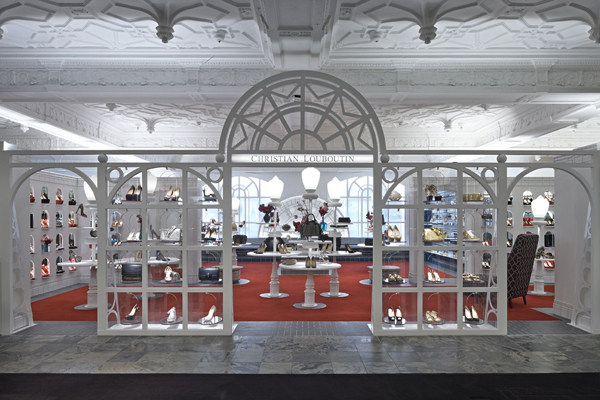Australian architects will find it “very difficult” to work in the UK under prohibitive new immigration laws. indesignlive.com’s Business Editor Gemma Battenbough reports.
April 22nd, 2010
Many Australian architects will be excluded from working in the UK under harsh new immigrations laws, indesignlive.com can reveal.
Concern about rising unemployment in the architectural profession as a result of the UK recession has led the British Home Office to tighten entry requirements.
The British immigration system works on a similar points system to Australia. Under this structure, architects were given 45 vital points towards a work visa, providing they earned more than $66,000.
However, this threshold has been dramatically hiked up to $124,000, realistically excluding all but associate- and director-level professionals.
“Architects are already excluded from the tier two shortage occupation list, and sponsored skilled posts can only be filled by UK architectural practices provided they can demonstrate that suitable local applicants are not available,” Adrian Dobson, Director of Practice at the Royal Institute of British Architects (RIBA), told indesignlive.com.
Architects can still “theoretically” apply for a UK work visa under the tier one highly skilled worker category but the recent hikes in previous earnings now make it “very difficult”, he said.
The RIBA has never had a “protectionist policy”, Dobson said. But the current economic climate is “very challenging” for UK architects.
“[There] is evidence of significant over-capacity at the present time in the UK architects’ profession, but the future vitality of the profession will require us to be open to new ideas and labour markets,” Dobson said. “We hope that the UK government will be flexible in the future application of the points-based system.”
It is important to keep the “lively exchange” between UK and Australian architectural cultures active, Dobson said.
The Home Office confirmed that the new system would include architects, as well as categories such as entrepreneurs and doctors.
This comes as the British Council is announcing its Realise Your Dream Awards, which encourages Australian designers to move to the UK for work. The awards offer five prizes of tailored professional development and networking visits to the UK, along with financial assistance.
A work experience stint in London has become almost a rite of passage for many Australian architects. But, if difficulties in obtaining a work visa persist, attention could shift to Asia, said Reg Smith, CEO of Sydney-based architectural firm Allen Jack + Cottier. And this could be incredibly good for business.
The profession needs to “stop being Eurocentric” and put “new emphasis” on skill swapping with Asia, Smith told indesignlive.com.
“I believe we should be changing our focus. We are not playing on a European stage; we’re playing on a global stage. We’re part of Asia and we need a better understanding of its many cultures.”
There are plenty of business opportunities for practices in Asia and having direct insights from staff who have worked there can be incredibly valuable, he said.
“Australian architects are well respected in Asia. The Chinese, in particular, appreciate what we can do,” he said.
Allen Jack + Cottier has overseas offices in Beijing, Hangzhou, Ho Chi Minh, Kuala Lumpur and Shanghai.
Skill swapping with other countries brings “wonderful advantages” to practice in Australia, Michael Mandl, GroupGSA’s Director of Architecture, told indesignlive.com.
Forty-nine per cent of GroupGSA’s staff is aged between 20 and 35 years old – prime time for working overseas – but Mandl is not into clipping wings.
“We love it when people go overseas and get new experience. And of course we love it more when they come back. Skill swapping and immersion in other cultures is very important for practices. It’s refreshing, brings vigour and helps us to build global networks.”
Read last week’s business story “Worrying Gaps” in Design Triennial: DIA.
A searchable and comprehensive guide for specifying leading products and their suppliers
Keep up to date with the latest and greatest from our industry BFF's!

BLANCOCULINA-S II Sensor promotes water efficiency and reduces waste, representing a leap forward in faucet technology.

With the exceptional 200 Series Fridge Freezer, Gaggenau once again transforms the simple, everyday act of food preservation into an extraordinary, creative and sensory experience, turning the kitchen space into an inspiring culinary atelier.

Elevate any space with statement lighting to illuminate and inspire.

Within the intimate confines of compact living, where space is at a premium, efficiency is critical and dining out often trumps home cooking, Gaggenau’s 400 Series Culinary Drawer proves that limited space can, in fact, unlock unlimited culinary possibilities.

Using data compiled from over 100 sources, New York based architecture firm Diller Scofidio + Renfro have created EXIT — a 360-degree video experience that unravels the reality of refugees and global migration, number by number.

The shoe is firmly on the other foot in this luxury retail project where one design icon has deferred to another to create their lavish boutique in London.
The internet never sleeps! Here's the stuff you might have missed

A closer look at Melbourne Place by Kennedy Nolan – a hotel magnetising Australian brands and reflecting a new design experience through a distinctly local focus.

Dusit Thani Bangkok has reopened with a contemporary interpretation of its heritage by André Fu Studio, blending Thai cultural influences with modern design.